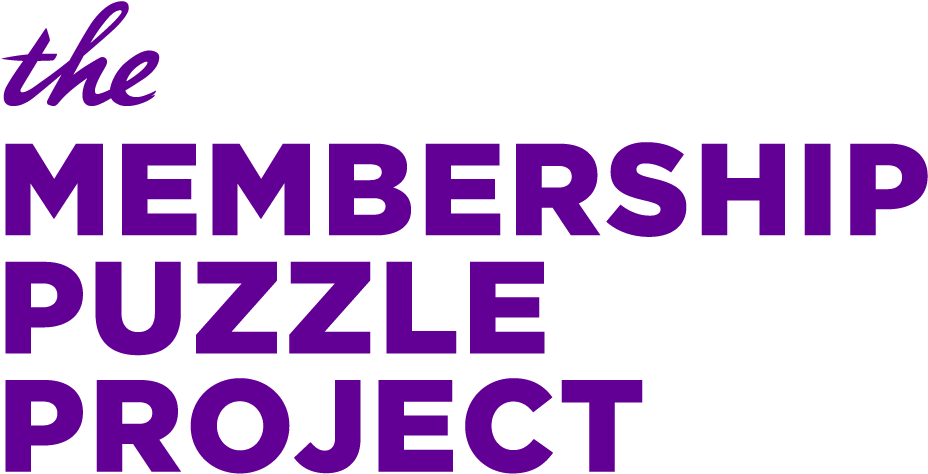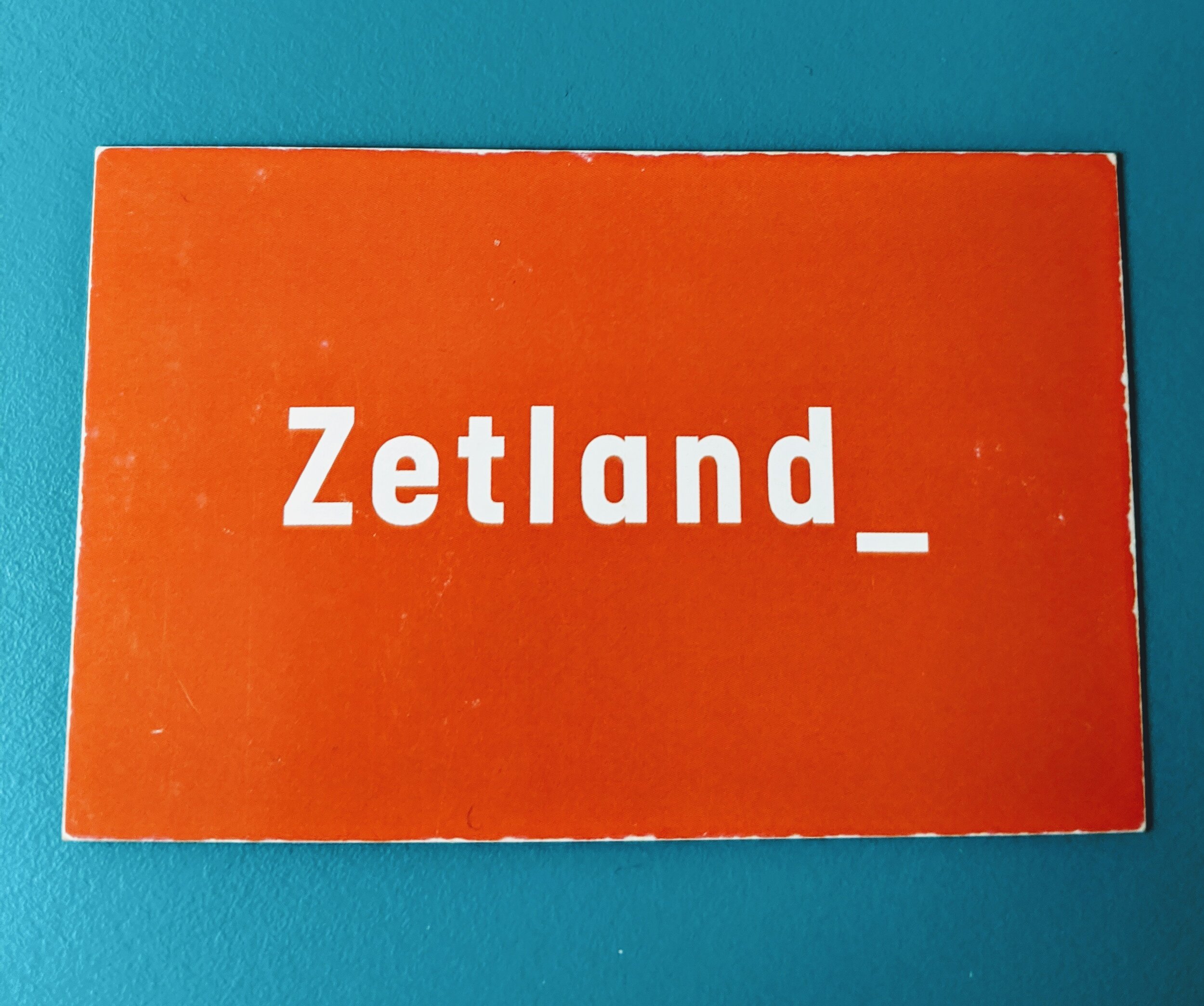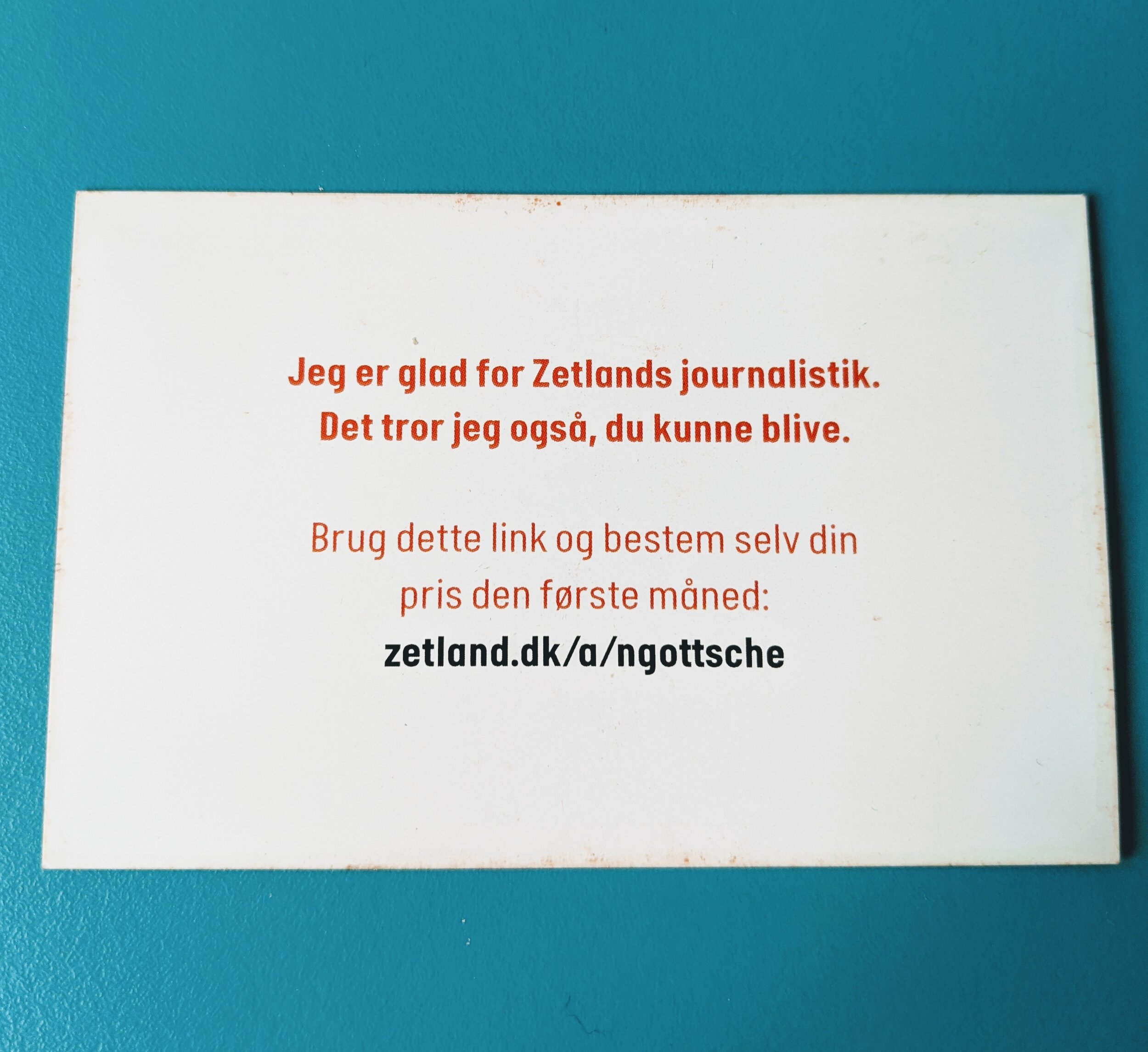In March 2016, the Danish member-driven newsroom Zetland launched as a daily publication with the goal of adding curiosity and complexity to public conversation. Over the next three years, they charged toward 10,000 members. They developed a loyal fan base. They brought together hundreds of members in Copenhagen for live journalism events and launched an audio strategy to deepen their relationship with their readers.
They were changing how journalism is done in Denmark, and how audience members participate in it.
But in early 2019, CEO and co-founder Jakob Moll was forced to acknowledge that although the enthusiasm was still there, the sustainability they hoped would follow just wasn’t. Zetland’s expenses were consistently exceeding its revenue, and they needed to try something new if they were to ever get out of the red.
At the time, Zetland had 10,500 members. Moll calculated that if they reached 14,000 members, their revenue would cover their expenses, and then some.
Zetland wanted to grow their member base in a way that showed members how important they were to Zetland’s future, and that charted a new relationship between the newsroom and its strongest supporters. And, they wanted their strategy to go beyond throwing money at a Facebook acquisition campaign, or relying on only their high-profile members to recruit new members.
Thus, the “members getting members” ambassador campaign was born.
In just one month, they reached that 14,000 member goal, achieving the most important goal of all for the future of Zetland: they closed out 2019 as a sustainable media company.
This case study will show how Zetland turned its most ardent supporters into powerful drivers of growth, including how they inspired their members to become ambassadors, how they trained them, and how they maintained momentum throughout the campaign.
Emily Roseman
Researcher
@emilyroseman1
Part 1: The plan
This ambassador campaign wasn’t the first time that Zetland found a mission-aligned way to solve a sustainability challenge.
Back in 2016, they noticed that their once-loyal members were disengaging and unsubscribing. After gathering member feedback and data from user-testing, they piloted an audio alternative to some of their stories. In late 2016, responding to positive results from the pilot, they decided to make every piece they publish accessible by both text and audio, usually narrated by the same journalist who wrote the story.
This ambitious mix of audio and text was a major investment, but it worked. By summer 2017, monthly member churn had dropped from 9 percent to 6 percent, members’ self-reported satisfaction with Zetland’s journalism was booming, and members were reading, listening and engaging with more of their stories.
A screenshot of a sample Zetland story, with the embedded audio at the top of the story page.
Within Zetland, a test-and-learn culture took root. The team’s willingness to experiment with novel solutions to their readers’ problems would come in handy in 2019, when Moll and the leadership team realized they needed to chart a new financial course.
Moll was inspired by the British brewing company Brewdog and Swiss online magazine Republik, which, when faced with financial challenges, opted to disclose their revenue numbers and asked community members for help. (For more on Republik’s crowdfunding success, check out this Nieman writeup). Moll also remembered how positively the Zetland audience responded when co-founder Lea Korsgaard wrote the personal essay, "Three extremely good reasons why being a media entrepreneur is totally not worth it" back in August 2018.
His takeaway: emotional vulnerability and brutal financial transparency could move people to take action.
So, the team decided to pull the curtain all the way back. They took a two-pronged approach: they appealed to members emotionally by sharing the story of Zetland’s founding and how members’ passion for the mission inspired them, and they published a radically transparent breakdown of their financial situation. The goal was to pave the way for their strongest appeal yet: if you want to make sure Zetland sticks around, we need you to help us recruit new members.
Part 2: Leveraging the hearts and minds of their members
They began in June 2019, with Moll publishing a piece headlined: “Here are the key figures about Zetland’s business that are usually kept secret in a business like ours.” The article laid bare Zetland’s financial books.
Moll was blunt: “Right now, our expenses are greater than our income – in other words, the amount in our bank account is shrinking every month. If you spread out the snapshot over a whole year, we have an income of 1,300,000 a month and expenses of 1,650,000. If we had 14,000 paying members instead of 10,500, our expenses and income would balance.”
Either the newsroom’s members could help, or Zetland could possibly be forced to close, Moll wrote. As he put it somewhat humorously:
“Here is our conclusion: We cannot address the challenge we are facing here alone. Regardless of how much money we throw at talking about Zetland on Facebook, regardless of how often the editor-in-chief shoehorns herself onto the TV show Deadline.”
The article was a big hit. (Jakob later explained in a webinar with the Membership in News Fund cohort that this story went viral and is still being read today, eight months later).
Meanwhile, Zetland’s editor-in-chief Lea Korsgaard produced a series of audio stories and articles focusing on the newsroom staff and their members. The series included heartwarming and vulnerable anecdotes about the founders themselves, who shared how the stress and pressure of entrepreneurship sometimes almost drove them to tears.
Part 3: Turning existing members into ambassadors
Moll’s financial tell-all article also introduced members to a proposed solution: become an ambassador for Zetland and recruit new members.
A member-gets-members ambassador campaign wasn’t a brand-new concept for Zetland. Moll’s ask built on lessons learned from their first ambassador campaign in spring 2018, which brought in 700 new members. A few interesting data points had emerged, like how the bulk of new members came from ambassadors who would convert one or two members each (this pattern turned out to be true for their most recent campaign, too). In this first campaign, new recruits got free access to Zetland stories through their ambassador, instead of paying the monthly member fee.
But many of those new members didn’t stick: only half of them even logged on to Zetland after the campaign ended. Moll believes that giving free access sent the wrong message to their audience.
For the 2019 campaign, Zetland focused on recruiting a specific kind of member: the kind who understood the value of high-quality journalism and was willing to pay for it. Recruits got to pay whatever they wanted for the first month of access, but after that, they would have to pay the monthly membership fee of ~$14 a month. Zetland emphasized that if every third Zetland member recruited one new member, their newsroom could be saved.
Ambassador recruitment officially started with Moll’s financial-tell-all article, which included a sign-up form for ambassadors (see image below) that first verified the respondent was already a Zetland member.
Translation: First, let's just ask: You are already a member of Zetland, right?
One interesting thing about this question on the form: they only added it on the second day of the campaign, after the team noticed several non-members signing up to become ambassadors. They tweaked the form to tell non-members to become members first, which ended up recruiting hundreds of new members.
The sign-up form was also the process for onboarding ambassadors. The form could take up to 15 minutes to fill out, and asked questions about how the ambassador preferred to recruit their new members. Every question was intended to “plant seeds in people's minds” about how they could recruit once the campaign launched, Moll said.
Of note here is that ambassadors were given the power to grant their recruits a pay-what-you-want membership for the first month, after which they had to pay the ~$14 monthly membership fee.
One source of inspiration for this idea was the Norwegian magazine Dag og Tid ("Day and Time"). Marketing Manager Gregor Falkner showed Moll campaigns they had run with a pay-what-you-want model, and suggested Zetland members would likely give more than the typical cost of membership. (Last week, we shared in this newsletter how the Daily Maverick’s pay-what-you-want model works. The South African outlet found that readers did not automatically go for the minimum amount.)
Over the next two weeks, more than 1,000 people across Denmark signed up to become ambassadors. Membership sales also rose immediately.
The mechanics of the ambassador program: analog and digital
Zetland equipped their new ambassadors for both digital and print recruitment campaigns.
When a member became an ambassador, Zetland gave them a unique URL that included their name. The URL was easy to remember by design so that ambassadors could seamlessly share the link both in conversation and on social media. The URL brought potential new members to the pay-what-you-want sign-up form.
In addition to a unique URL, Zetland also gave ambassadors the option of postcards or posters to spread the word offline. They shipped out more than 20,000 postcards and 2,000 posters with ambassadors’ personal codes for the ambassadors to share with friends, neighbors and colleagues once the campaign launched in August.
These postcards and posters were not cheap, Moll said in the webinar with the Membership in News Fund cohort, particularly because of the expensive price of shipping in Denmark. But Zetland saw it as an investment in the ambassadors and their trust.
The Zetland team added small gifts and surprises in their shipments of postcards and posters, like stickers, little bags, and packets of plant seeds. Molly explained that allowing ambassadors to recruit offline, and sending them presents in the mail were ways of signaling to their ambassadors how much they appreciated their help.
Part 4: The launch
On Aug. 6, the ambassador campaign officially launched.
Ambassadors sent out their postcards and posted on social media, sharing their unique URL that would take their friends to the pay-what-you-want sign-up form.
A snapshot of the Zetland member sign-up form
The form began with a video of Jakob introducing himself and Zetland’s mission. Then, the reader was shown the dominant call-to-action, which was the pay-what-you want box (in the live version of the form, this part catches the reader’s eye thanks to a blinking cursor in the form’s box).
If the new member entered “0” in the pay-what-you-want box, the text below the box updated to read, “We look forward to proving that we are worth paying for.” At “1,” it changed to, “A little is also okay. We look forward to proving that we are worth paying for.” From “2” onward, the form thanked new members for their contribution. Anything over the typical membership amount (about $6.50 for the first month, and about $14.50 every month after that) triggered the message, “Thanks a lot. Every penny helps us and we are truly grateful for your generous contribution.”
When a new member signed up, Zetland sent them a long, personal welcome email from Korsgaard, the editor-in-chief. (Moll said this tactic came from the 2016 Bernie Sanders campaign, which ran A/B tests and found that longer, more frank emails tended to perform better than “cool-looking conversion-optimized emails.”)
Moll said it was vital that the messaging remained consistent throughout the campaign. They frequently reminded their readers, members and ambassadors that “this is your campaign, it's not ours.” They showed that they were listening by reacting to the ambassador's ideas, anecdotes and advice. The Zetland team also intermittently reported on funny, weird and interesting recruitment moments, like when an ambassador (Alexandra, shown below) told her birthday party guests that all she wanted for her birthday was for them to become Zetland members.
This picture of ambassador Alexandra’s birthday party was included in a newsletter that went out to Zetland ambassadors, which included tips on how to recruit more members (such as being personal in their request and sharing their favorite article.) They noted that the birthday party idea was an example of an ambassador going above and beyond.
In the final days of the campaign, they released a final emotional request to their ambassadors over video. This “rallying cry” video timelined the last few days of the campaign and asked their ambassadors to keep recruiting until the end.
As you can see in the chart from Zetland below, the team saw a large uptick in new members from the date of posting the video (Sept. 2) through the end of the campaign.
Chart provided by Jakob Moll
Part 5: The results
Zetland’s ambassador campaign launched on Aug. 6 and formally ended on Sept. 6. At the start, their goal was to add 1,400 members to their then-10,500 members. They reached that goal in a week.
In September, they passed 2,500 new members (totaling 13,000 members).
By the end of the campaign, they surpassed 14,000 members. That 14,000 number is significant because at 14,000 members, their newsroom broke even and started making a small profit.
When I reached out to Moll to see where they are now, he reported they are “moving toward 15,000 members.” About 1,500 of those members were also ambassadors, and so far 346 of those ambassadors have signed up to be ambassadors year-round. Zetland plans to launch a special program for this group soon, designed in part by the ambassadors themselves, and likely involving the ambassador-created landing pages where they can showcase their favorite Zetland stories.
The pay-what-you-want model was also a success. Similar to the Daily Maverick, Zetland members didn't go for the lowest possible payment. (On average, new Zetland members decided to pay a little bit less than the equivalent of $9, when the sticker price for the first month of membership is equivalent to $6.50.)
In addition to recruiting new members, more than 500 Zetland members also volunteered to help with member-driven editorial projects in the coming months.
What’s Next?
When the campaign finished in September, the Zetland team turned to retention. The entire staff sat down to call the 250+ ambassadors to say thank you (see video below).
I asked how the members and ambassadors are doing now, six months after signing up. Moll said that the churn rate of members converted via the ambassador program matches churn rate from members acquired elsewhere (about 67 percent after 2 - 3 months). He also mentioned that daily member signup rates remain higher than they were before the campaign.
One other thing the Zetland team is thinking through now: how to make sure they don’t have different tiers of members that makes the program seem “undemocratic.” It’s important to Zetland’s mission that all members have the same level of access to the site. Zetland is in the process of thinking through how they can give thanks and recognition to their ambassadors without alienating the other members. One idea: a special ambassador mug, or some other piece of swag as a thank-you gift.
When asked whether the team is considering launching another ambassador-driven, pay-what-you-want campaign in the future, Moll said: “We are laying the foundation right now. We are following up with the ambassadors that have volunteered to help us year-round, and in the coming months we will speak with our members around one central question: What is the next big goal for Zetland? What can we try to achieve that makes us worthy of their support? That will be the foundation of the next run in the late summer or early fall.”
This case is based on several insights and data provided by Jakob Moll, co-founder and CEO at Zetland. Moll reached out to Membership Puzzle Project with news of their ambassador campaign’s success. In November 2019, Jakob presented on Zetland’s ambassador campaign to the Membership in News Fund cohort. We’re very grateful to him and the Zetland team for allowing us to share these learnings with a wider audience!
Ariel Zirulnick contributed to this post.









